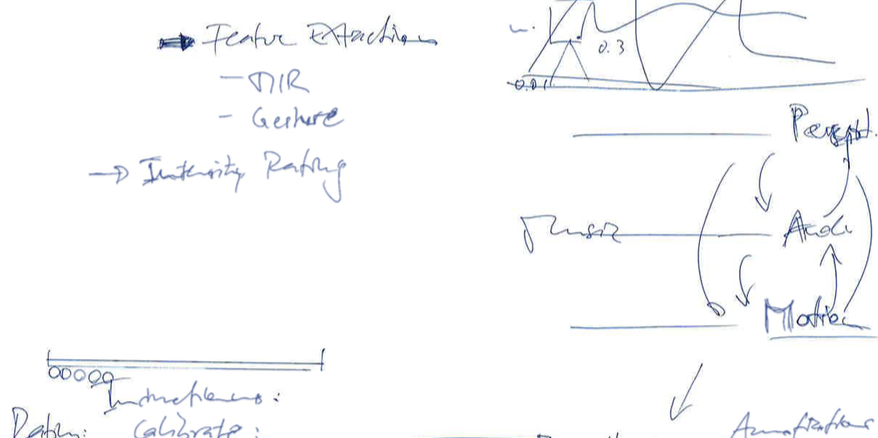The research is carried out through four parallel tracks, using simultaneous experimental studies and development processes. By addressing the subject matter from four different perspectives, an overlapping space of interpretation emerges, where the corporeal experience of musicians and dancers, composers and choreographers is to be evaluated. Practice-based artistic projects both in interactive music and dance serve as experimental settings. Within these processes analysis methods from the three related domains are applied: Psychology, which mixes qualitative and empirical approaches, Music Analysis of contemporary composition- and performance-practices and data acquisition and machine learning analysis of motion. The project’s indi- vidual tracks are also assessed in a synthetic manner and a unified overarching analysis completes the research approach.
This exploratory research approach serves to combine the research perspectives and obtain significant results through the blending of methods from the different disciplines.
The central research question is the following:
- What constitutes a gesture in music performance, music composition, and music perception?
This leads to a number of subordinate questions:
- How can we define, describe, analyse and represent a musical gesture?
- In what way is a performance gesture transformed into the perception of form in music?
- What are the physical and semantic elements that transform motion into a musical gesture?
- What is the relationship between measurable aspects of motion and perceived gestures?
And finally a question that delineates the goal of the project:
- Can gesture serve as a fundamental model for understanding (expressive/embodied/formal) elements of music?
In order to anchor the investigation into these questions in musical performance practice, two exemplary practice-based productions form the basis of the project. They serve as experimental settings for psychological categorisation and evaluation, formal musical analysis, and technical acquisition and evaluation of motion data and gestures. The first practice-based project explores gesture through the composition of pieces for a trombone player in interactive, gesture-based performance situations. The second practice-based project inverts the relationship between motion/gesture and music. Through the development of cross-disciplinary music-dance pieces, a dancer takes on to role of interpreter in an interactive performance situation.
In addition, at the start of each practice-based phase, an experimental session is held with a high-level external artist, who provides a reference situation through her/his practice. Through these measures the artistic processes will serve to explore the central question through the means of conceptual developments for music composition and gestural performance.

